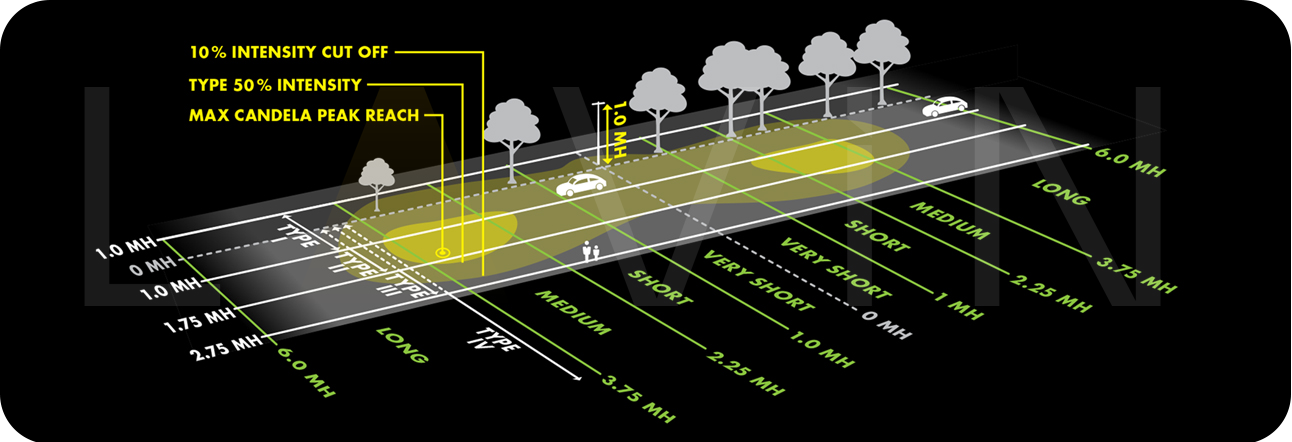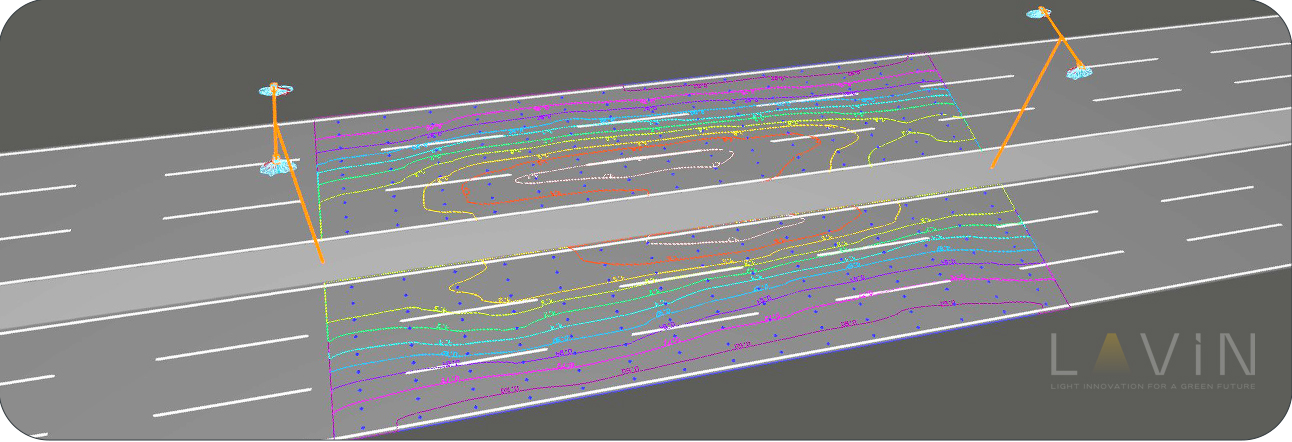Lighting Design
ROAD LIGHTING :The purpose of road lighting is to enable drivers to travel safely and to increase pedestrian visibility and their confidence. To achieve this, good vision conditions must be created. The driver's needs should be taken into account while lighting the road, and the visual conditions should be improved.The most important part of city lighting is road lighting. The definition of road lighting includes urban roads, highways, Mainways, express roads, ring roads, avenues and streets, connection roads, intersections and other roads.
A good road lighting is sufficient to create good visual conditions. Good lighting solves the complexity of transportation, makes people feel safe and ensures smooth traffic flow.In road lighting calculations, the average luminance of the road (L0), average smoothness (U0), longitudinal smoothness (U1), relative threshold increase (TI) and containment ratio (SR) are important parameters.
Glare is also extremely important in road lighting. Because direct glare from the lighting fixture causes visual performance losses. Glare will reduce the visibility of dangerous objects on the road. Roads are divided into different classes according to the way of use, speed limit and crime rate. There are different lighting quality sizes that must be provided for lighting classes from M1 to M6. Lighting poles, depending on the width of the road; It can be placed single-sided, double-sided or mutually shifted.
Lighting poles, depending on the width of the road; It can be placed single-sided, double-sided or mutually shifted.
Road lighting calculations can be done with the help of computer simulation software such as DIALux - RELUX.
Photometric measurements of all the products we manufacture have been made. The .ldt or .ies files that will be needed for the products to be used in the programs can be accessed from the documents section of the data page of the relevant product on our website.
Parameters such as road width, pole height, distance between poles are entered into the program and calculations are performed by placing the lighting fixtures to be used. As a result of the calculation, it is shown whether the lighting conditions are met for the specified class. These softwares are designed to make an evaluation based on the main standard written below and its parts below.
These softwares are designed to make an evaluation based on the main standard written below and its parts below.
EN 13201 Road lighting
Part 1: Guidelines on selection of lighting
Part 2: Performance requirements
Part 3: Calculation of performance
Part 4: Methods of measuring lighting
Part 5: Energy performance indicators
Simulation software also has an optimization feature that allows to find the most suitable pole distance and pole height. For the use of this feature, limit values are entered into the program and the process is started to create the best scenario among these values.
EN 12464 Standard for Lighting of Indoor / Indoor Work Places :